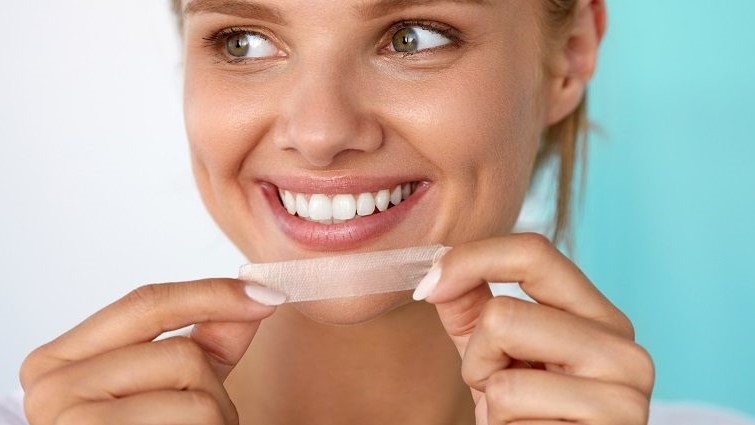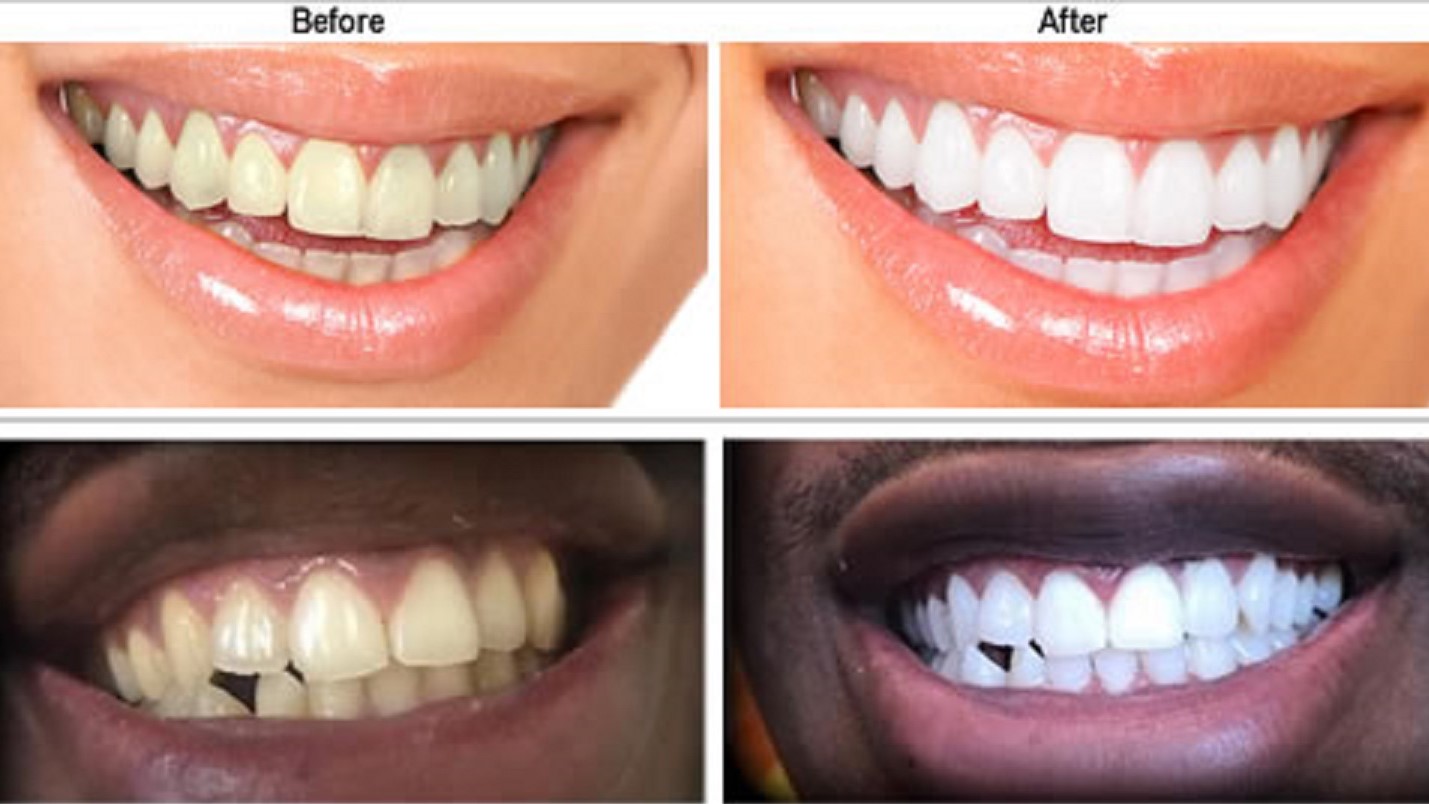
Find Out The Secrets of Teeth Whitening
Table of Contents
Many people struggle with teeth discoloration and feel self-conscious about their smiles. This is where teeth whitening can be a game-changer.
Your smile is one of the first things people notice about you, and it can leave a lasting impression. A bright, white smile can boost your confidence, make you look younger, and leave a positive impression on those around you.
In this article, we’ll explore the importance of teeth whitening and how it can benefit you.
Understanding Teeth Discoloration
Teeth discoloration can occur for a variety of reasons, including age, genetics, poor oral hygiene, and lifestyle factors such as smoking, drinking coffee, and consuming certain foods and beverages.
Over time, these factors can cause teeth to become stained and discolored, which can make you look older, unhealthy, and less confident.
The Benefits of Teeth Whitening

- Improved Appearance: Teeth whitening can dramatically improve the appearance of your teeth, making them look brighter, whiter, and healthier.
- Youthful Appearance: A bright, white smile can make you look younger and more vibrant. As we age, our teeth tend to become yellow or discolored, which can make us look older than we actually are. Teeth whitening can reverse this process and help you look and feel younger.
- Positive First Impression: Your smile is often the first thing people notice about you. A bright, white smile can leave a positive first impression and make you appear more friendly, approachable, and confident.
- Improved Oral Health: Teeth whitening can also encourage you to take better care of your teeth and oral health. When you have a bright, white smile, you’re more likely to brush and floss regularly and take steps to maintain your oral hygiene.
Also read: Beauty and Health: The connection between inner and outer beauty
Teeth Whitening Options
There are several teeth whitening options available, including professional teeth whitening treatments, at-home teeth whitening kits, and natural remedies.
Professional teeth whitening treatments, such as in-office whitening or take-home kits provided by your dentist, are the most effective and safest options.
At-home teeth whitening kits and natural remedies can also be effective, but they may not produce the same results as professional treatments.
Maintaining a Bright Smile
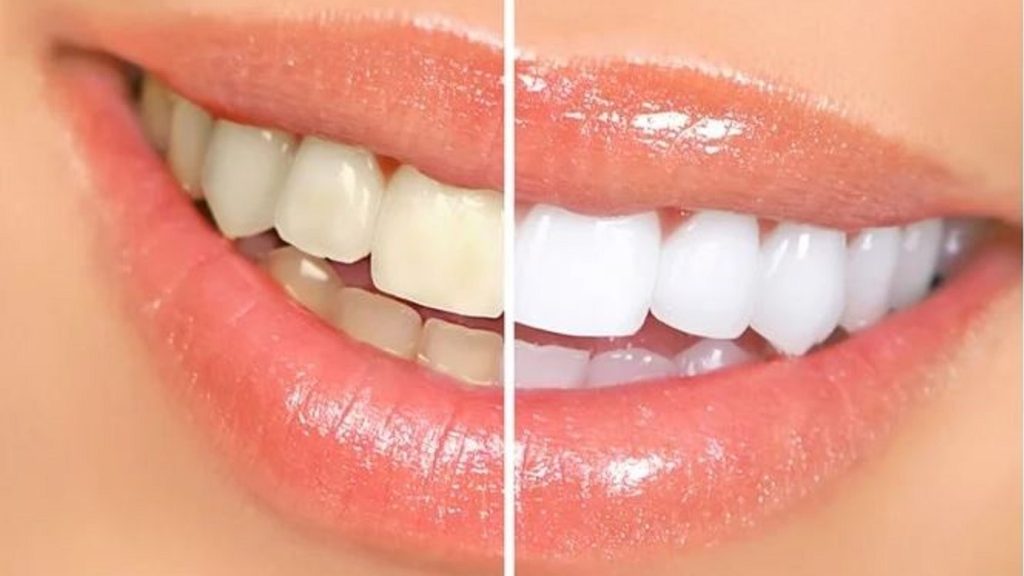
Teeth whitening is an effective way to improve your smile, boost your confidence, and leave a positive impression on those around you. If you’re unhappy with the appearance of your teeth, consider exploring your teeth whitening options to unlock your brightest smile yet.
A brighter, whiter smile can improve your appearance, make you feel more youthful, and leave a lasting positive impression on those around you.
Once you’ve achieved a bright, white smile, it’s important to take steps to maintain it. This includes practicing good oral hygiene, avoiding foods and drinks that can stain your teeth, and scheduling regular dental checkups. Your dentist can provide additional tips and advice on how to maintain your new smile.
Causes of Teeth Discoloration
A variety of reasons can cause teeth discoloration, examples include
- Aging: As we age, the outer layer of our teeth, known as the enamel, can become thinner, revealing the yellowish dentin layer underneath.
- Genetics: Some people are genetically predisposed to have thicker or more porous enamel, which can make their teeth more susceptible to discoloration.
- Poor Oral Hygiene: If you fail to brush and floss your teeth regularly, plaques and tartar can easily build up on your teeth and lead to discoloration.
- Lifestyle Factors: Certain lifestyle factors can contribute to teeth discoloration, including smoking, drinking coffee, tea, or red wine, and consuming acidic foods and drinks.
- Medications: Certain medications, such as tetracycline antibiotics, can cause teeth discoloration, especially if taken during childhood when teeth are still developing.
Types of Teeth Stains
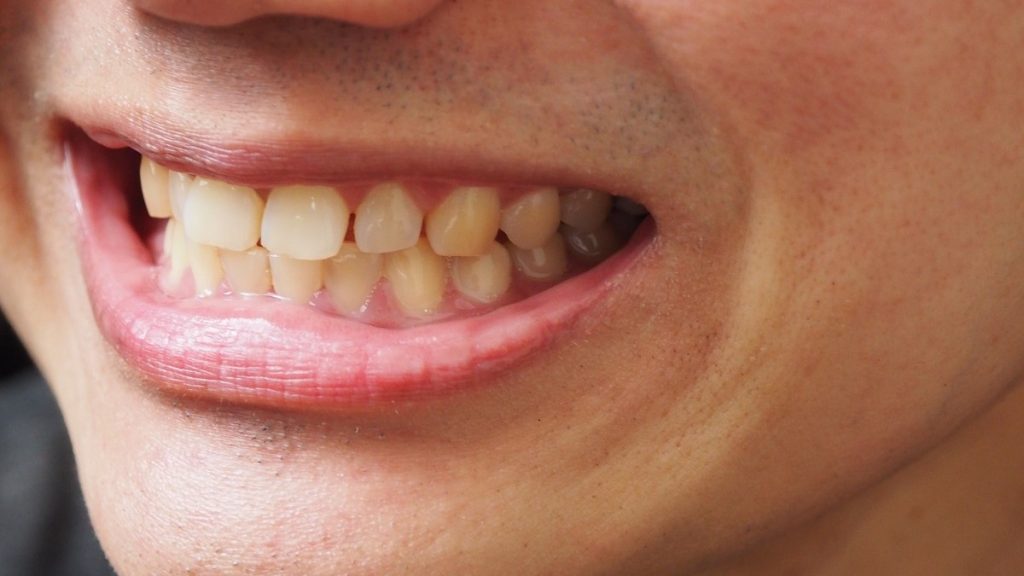
There are two main types of teeth stains: extrinsic and intrinsic.
- Extrinsic Stains: Extrinsic stains are on the surface of the teeth and are caused by external factors such as smoking, drinking coffee, tea, or red wine, and consuming acidic foods and drinks. These stains are usually yellow or brown in color and can often be removed with teeth-whitening treatments.
- Intrinsic Stains: Intrinsic stains are deeper and occur within the tooth, often due to internal factors such as aging, genetics, and certain medications. These stains are usually gray, brown, or yellow in color and can be more difficult to remove with teeth-whitening treatments. In some cases, cosmetic dentistry procedures such as veneers or bonding may be necessary to improve the appearance of teeth with intrinsic stains.
It’s important to note that not all teeth’ discoloration is the same, and the best treatment for your teeth will depend on the cause and type of stain.
If you’re considering teeth whitening or other cosmetic dental procedures, it’s important to consult with your dentist to determine the best course of action for your individual needs.
The Concept of Professional Teeth Whitening
Professional teeth whitening is a cosmetic dental procedure that is designed to improve the appearance of teeth that have become discolored or stained over time.
While there are many over-the-counter teeth whitening products available, professional teeth whitening is considered the most effective and safe option.
In-office teeth whitening is a popular professional teeth whitening option that involves a dental professional applying a strong bleaching agent directly to the teeth.
The procedure usually takes about an hour, and the results can be seen immediately.
In-office Teeth Whitening Procedure
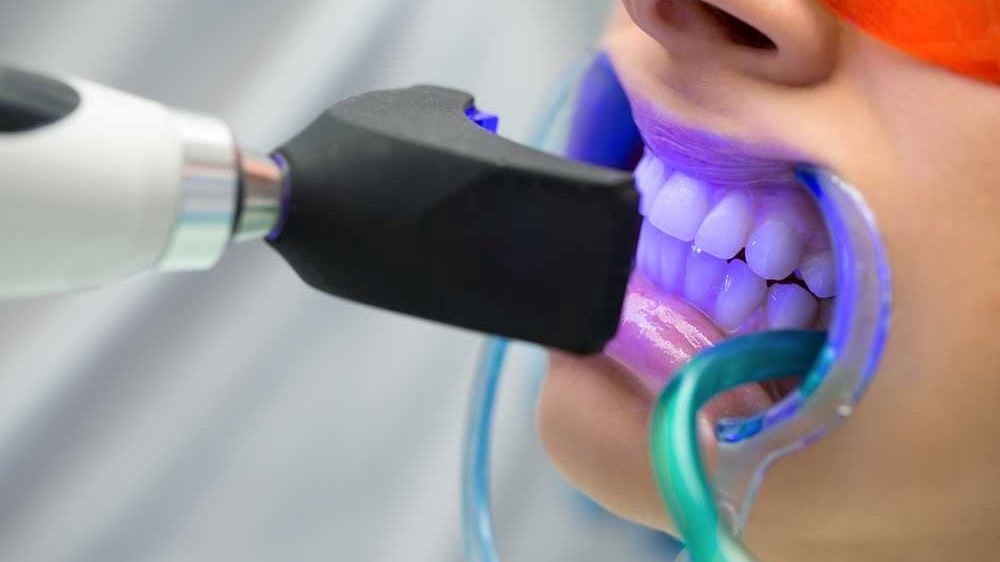
- Evaluation: Before the procedure, your dentist will evaluate your teeth to determine the best course of treatment for your individual needs.
- Preparation: Next, your dentist will prepare your mouth for the procedure by placing a protective barrier over your gums and lips.
- Whitening Solution: Your dentist will then apply a strong bleaching solution directly to your teeth. This solution is typically made up of hydrogen peroxide or carbamide peroxide, which work to break down stains and discoloration on the teeth.
- Activation: Once the whitening solution is applied, your dentist may use a special light or heat source to activate the solution and enhance its effectiveness.
- Multiple Sessions: Depending on the severity of the discoloration and the desired results, your dentist may repeat the process several times during the same appointment.
- Post-Treatment Care: After the procedure is complete, your dentist will provide you with post-treatment care instructions to ensure that you maintain your newly whitened smile.
It’s important to note that in-office teeth whitening is not suitable for everyone, and some patients may experience sensitivity or discomfort during or after the procedure.
Also read: Green Tea: exploring its powerful healing benefits
What is the cost of Teeth Whitening?
The cost of professional teeth whitening can vary depending on several factors, including the location of the dental office, the experience of the dentist, and the type of whitening procedure being performed.
In general, the cost of in-office teeth whitening can range from $500 to $1,500, with take-home teeth whitening kits being slightly less expensive.
The Potential Side Effects of Teeth Whitening
As for potential side effects, it’s important to note that professional teeth whitening is generally considered safe, but some patients may experience temporary side effects such as
- Sensitivity: Some patients may experience tooth sensitivity or discomfort during or after the procedure. This is usually temporary and can be managed with over-the-counter pain relievers or desensitizing toothpaste.
- Gum Irritation: In some cases, the whitening solution can cause irritation or inflammation of the gums. Your dentist will take steps to minimize the risk of this happening during the procedure, but if you experience any discomfort, you should contact your dentist right away.
- Uneven Results: In rare cases, patients may experience uneven results, with some teeth appearing whiter than others. This can be caused by variations in the structure or thickness of the teeth and may require additional treatments to achieve a more even result.
It’s important to note that while these side effects are generally mild and temporary, they can be more severe in rare cases. Before undergoing professional teeth whitening, it’s important to discuss any concerns or potential risks with your dentist and to follow their instructions for post-treatment care to minimize the risk of complications.
Home Teeth Whitening
At-home teeth whitening is a popular option for those who want to improve the appearance of their teeth but prefer a more convenient and cost-effective approach than in-office whitening procedures.
Home Teeth Whitening Options
There are several different options available for at-home teeth whitening, each with its own set of pros and cons.
Whitening toothpaste
Whitening toothpaste is a common over-the-counter option for at-home teeth whitening. These toothpaste usually contain mild abrasives that help to remove surface stains and brighten teeth over time. The pros of whitening toothpaste include its ease of use and affordability. However, the cons are that the results can take a long time to appear, and the toothpaste may not be effective for deep or stubborn stains.
Whitening strips
Whitening strips are another popular option for at-home teeth whitening. These strips are thin and flexible and are coated with a peroxide-based whitening gel. They are placed over the teeth for a specified amount of time, usually around 30 minutes, and are typically used for a week or two. The pros of whitening strips include their convenience, affordability, and effectiveness in removing surface stains. However, the cons are that they may cause tooth sensitivity or gum irritation, and they may not be effective for deep or stubborn stains.
Whitening trays
Whitening trays are custom-made trays that are filled with a peroxide-based whitening gel and are worn over the teeth for a specified amount of time, usually around 30 minutes to an hour. The pros of whitening trays include their effectiveness in removing deep or stubborn stains and the fact that they can be used repeatedly. However, the cons are that they are more expensive than other at-home options, and they may cause tooth sensitivity or gum irritation.
Natural teeth whitening
There are also several natural remedies that are believed to help whiten teeth, including baking soda, hydrogen peroxide, and activated charcoal. The pros of natural teeth whitening include their affordability and accessibility. However, the cons are that they may not be as effective as other options, and some natural remedies may actually damage tooth enamel if used incorrectly.
Also read: How Honey Can Change Your Life Today
In general, at-home teeth whitening can be an effective and affordable option for improving the appearance of your teeth. However, it’s important to follow the instructions carefully and to be aware of the potential risks and side effects, such as tooth sensitivity or gum irritation.
It’s also important to note that not all at-home whitening options may be effective for everyone, and it’s best to consult with your dentist to determine the best approach for your individual needs.
Natural Teeth Whitening Remedies
Natural methods have been used for centuries to help brighten teeth and improve their appearance. These remedies are typically affordable, easy to use, and maybe a good option for those who prefer a more natural approach to oral care.
Pros:
- Affordability: Natural teeth whitening remedies are typically more affordable than professional teeth whitening treatments.
- Accessibility: Most natural teeth whitening remedies can be found in your pantry or local grocery store.
- Ease of use: Most natural remedies can be easily incorporated into your daily oral hygiene routine.
Cons:
- Effectiveness: Natural remedies may not be as effective as professional teeth whitening treatments.
- Safety concerns: Some natural remedies may not be safe for use on teeth or may cause damage to the enamel.
- Inconsistency: Results may vary and may take longer to appear than professional treatments.
Examples of Natural Remedies
- Baking soda: Baking soda is a common natural remedy for teeth whitening. It is a mild abrasive that can help remove surface stains on teeth.
- Hydrogen peroxide: Thi natural bleaching agent can help whiten teeth easily. It can be used as a mouthwash or mixed with baking soda to create a whitening paste.
- Activated charcoal: Activated charcoal is a black powder that can help remove surface stains on teeth. It is thought to absorb toxins and impurities in the teeth.
- Oil pulling: Oil pulling is an ancient practice that involves swishing oil in the mouth to remove toxins and improve oral health. Some people claim that oil pulling can also help whiten teeth.
It’s important to note that while natural teeth whitening remedies may be effective for some people, they may not work for everyone. It’s also important to use these remedies correctly and to be aware of any potential side effects or safety concerns.
As with any oral care regimen, it’s best to consult with your dentist before trying any new products or treatments.
How To Maintaining a Bright Smile
After investing time and money into getting a bright, white smile, it’s important to maintain it. Here are some tips on how to keep your teeth looking their best:
- Brush and floss regularly: One of the most important aspects of maintaining a bright smile is good oral hygiene. Brushing twice a day and flossing once a day can help remove surface stains and prevent the buildup of plaque and bacteria.
- Use a whitening toothpaste: Using a whitening toothpaste can help keep your teeth looking bright and shiny. Look for toothpaste that contains whitening agents like hydrogen peroxide or baking soda.
- Rinse with water after consuming stain-causing foods and drinks: Certain foods and drinks can stain your teeth, including coffee, tea, red wine, and berries. To help prevent stains, rinse your mouth with water after consuming these items.
- Avoid smoking and tobacco products: Tobacco products, including cigarettes and chewing tobacco, can cause significant staining on your teeth. Quitting tobacco use can help prevent stains and improve your overall health.
- Get regular dental cleanings: Professional dental cleanings can help remove stubborn stains and prevent the buildup of plaque and tartar. Make sure to schedule regular appointments with your dentist or dental hygienist.
Importance of Oral Hygiene
Good oral hygiene is essential for maintaining a bright, healthy smile. Neglecting your oral health can lead to a buildup of plaque and bacteria, which can cause tooth decay, gum disease, and bad breath.
In addition, poor oral hygiene can contribute to staining and discoloration of your teeth. Regular brushing, flossing, and dental cleanings can help prevent these issues and keep your smile looking its best.
Foods and Drinks That Can Stain Teeth
Certain foods and drinks can cause significant staining on your teeth. Some common culprits include
- Coffee and tea: Both coffee and tea contain tannins, which can cause staining on teeth.
- Red wine: Red wine contains chromogens, which can cause staining on teeth.
- Berries: Berries contain pigments that can cause staining on teeth.
- Tomato sauce: Tomato sauce contains high levels of acidity, which can cause staining on teeth.
To help prevent staining, it’s important to rinse your mouth with water after consuming these items.
In addition, brushing and flossing regularly can help remove surface stains and prevent the buildup of plaque and tartar.
In conclusion, maintaining a bright, white smile is a combination of good oral hygiene habits, avoiding stain-causing foods and drinks, and utilizing whitening methods. Professional teeth whitening procedures can provide fast and effective results, but natural remedies and at-home treatments can also be effective with consistent use.
Regular dental cleanings and checkups are also important for maintaining good oral health and catching any potential issues early on. By following these tips and tricks, you can achieve and maintain a bright, healthy smile that you can be proud of.
Some Popular Questions
What is the best thing to whiten teeth?
The best thing to whiten teeth varies from person to person and depends on their individual needs and preferences. Some people may find that professional teeth whitening treatments, such as in-office treatments or take-home kits prescribed by a dentist, provide the best and most effective results.
Others may prefer natural remedies, such as brushing with baking soda or using activated charcoal, to whiten their teeth. It’s important to note that some methods may be more effective than others depending on the type and severity of the stains on your teeth.
Additionally, it’s important to consult with a dentist before attempting any teeth whitening treatment to ensure that it is safe and appropriate for your specific dental needs.
Can yellow teeth become white again?
Yes, yellow teeth can become white again with proper teeth whitening treatments. The degree of improvement depends on the severity and cause of the discoloration.
Professional teeth whitening procedures can provide significant improvement in a short period, while natural remedies or at-home treatments may take longer to show results.
It’s important to note that some types of discoloration, such as intrinsic discoloration caused by certain medications or dental trauma, may not respond well to teeth whitening treatments.
In these cases, other dental treatments, such as dental bonding or veneers, may be recommended to improve the appearance of the teeth. It’s always best to consult with a dentist to determine the best treatment plan for your individual needs.
Is whitening your teeth good or bad for you?
Teeth whitening is generally considered safe when performed under the guidance of a dentist or other dental professional. However, like any dental treatment, there are potential risks and side effects associated with teeth whitening.
Some people may experience temporary sensitivity or discomfort after a whitening treatment. In rare cases, whitening treatments may also cause damage to the tooth enamel or gums.
Overuse of whitening products or using products that contain high levels of hydrogen peroxide can increase the risk of these side effects.
It’s important to consult with a dentist before attempting any teeth whitening treatment to ensure that it is safe and appropriate for your specific dental needs.
A dental professional can also provide guidance on the best and safest ways to whiten your teeth and can monitor your progress to ensure that the treatment is effective and not causing any harm to your teeth or gums.
What are the risks of teeth whitening?
Teeth whitening is generally considered safe, but there are some potential risks and side effects to be aware of. These include
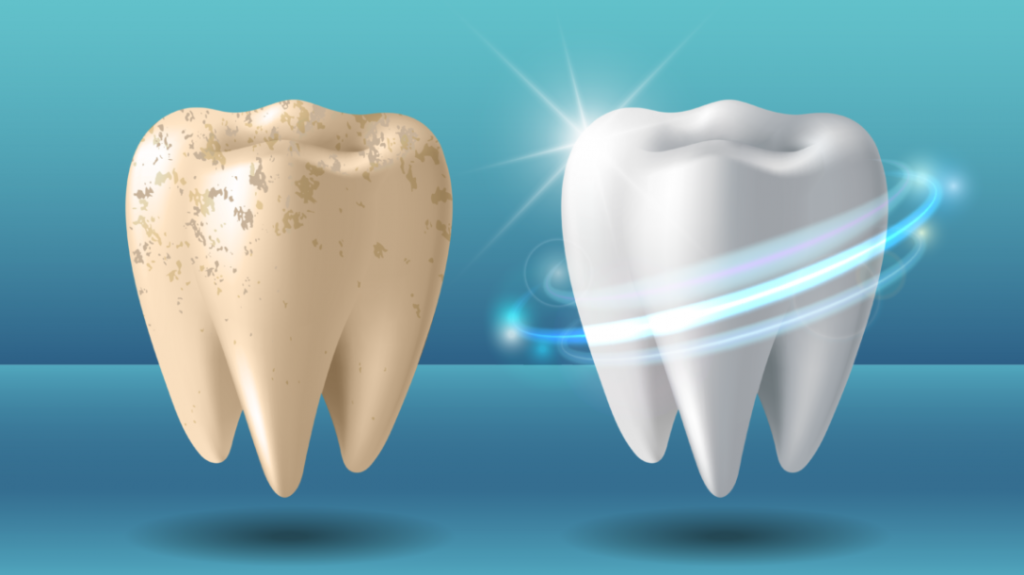
- Tooth sensitivity: Whitening treatments can cause temporary sensitivity in the teeth, particularly if the product used contains a high concentration of hydrogen peroxide.
- Gum irritation: Whitening products can also irritate the gums, causing inflammation or discomfort. This is more likely to occur if the product is not used correctly or if it comes into contact with the gums.
- Enamel damage: Overuse of whitening products or using products that contain high levels of hydrogen peroxide can damage the enamel on the teeth, making them more susceptible to decay and other dental problems.
- Uneven results: Whitening treatments may not produce uniform results, particularly if the teeth are not evenly discolored or if the product is not applied evenly.
- Allergic reactions: Some people may have an allergic reaction to the chemicals used in whitening treatments, causing swelling, itching, or other symptoms.
Also read: Vitamin Deficiencies 101: Understanding the most common deficiencies
A dental professional can also guide the best and safest ways to whiten your teeth and can monitor your progress to ensure that the treatment is effective and not causing any harm to your teeth or gums.
How long does professional teeth whitening last
The length of time that professional teeth whitening lasts varies depending on several factors, including the individual’s oral hygiene habits, dietary habits, and lifestyle choices.
Generally, professional teeth whitening can last anywhere from six months to two years.
Factors that can affect the longevity of teeth whitening results include:
- Oral hygiene: Good oral hygiene habits, including regular brushing and flossing, can help to maintain the results of teeth whitening treatments.
- Dietary habits: Certain foods and drinks, such as coffee, tea, red wine, and acidic foods, can cause staining and discoloration on the teeth, which can reduce the longevity of teeth whitening results.
- Lifestyle choices: Habits like smoking or using tobacco products can also cause staining and discoloration on the teeth, which can shorten the duration of teeth whitening results.
- Maintenance treatments: Many dental professionals recommend periodic maintenance treatments, such as touch-up whitening treatments, to help maintain the results of professional teeth whitening over time.
It’s important to follow your dentist’s recommendations for post-treatment care and maintenance in order to maximize the longevity of your teeth whitening results.
Who is an Endodontist?
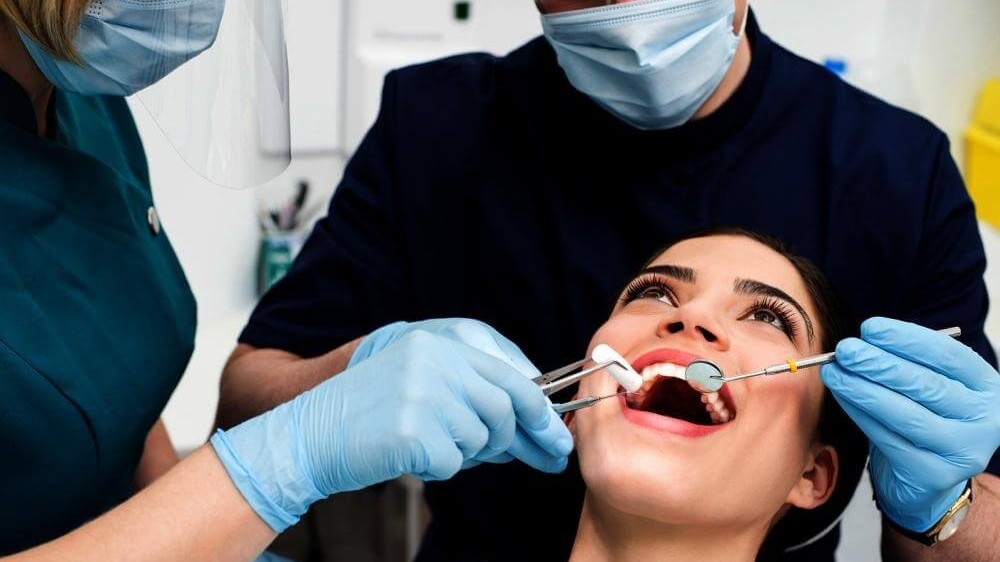
An endodontist is a dental specialist who focuses on treating problems that affect the dental pulp and root of teeth. This can include treating conditions such as tooth decay, root canal infections, and traumatic dental injuries.
Endodontists receive specialized training in the diagnosis and treatment of dental pulp and root disorders, including root canal therapy and other procedures that involve the removal of damaged or infected tissue from the tooth.
They may also perform other procedures related to the treatment of dental pulp and root disorders, such as apicoectomy, which involves the surgical removal of the tip of a tooth’s root.
To become an endodontist, a dentist must complete an additional two to three years of post-graduate training in endodontics after completing dental school. After completing their training, endodontists may work in private practice or a hospital or dental clinic setting.
Should you brush your teeth after whitening strips
It is generally recommended that you wait at least 30 minutes after removing the whitening strips before brushing your teeth. This allows time for any residual whitening gel to be absorbed into the teeth, which can help to maximize the whitening results.
Brushing immediately after using whitening strips can potentially remove some of the whitening gel from the teeth, which can reduce the effectiveness of the treatment.
Additionally, brushing too vigorously or using abrasive toothpaste can damage the enamel on the teeth, making them more susceptible to decay and other dental problems.
After waiting at least 30 minutes, you can brush your teeth as you normally would, using a soft-bristled toothbrush and non-abrasive toothpaste. Be sure to brush gently and avoid applying too much pressure, as this can damage the enamel on the teeth.
Let’s hear about your teeth whitening experience in the comment section.
Continue reading: What Happens Immediately You Suffer from Zinc Deficiency?
